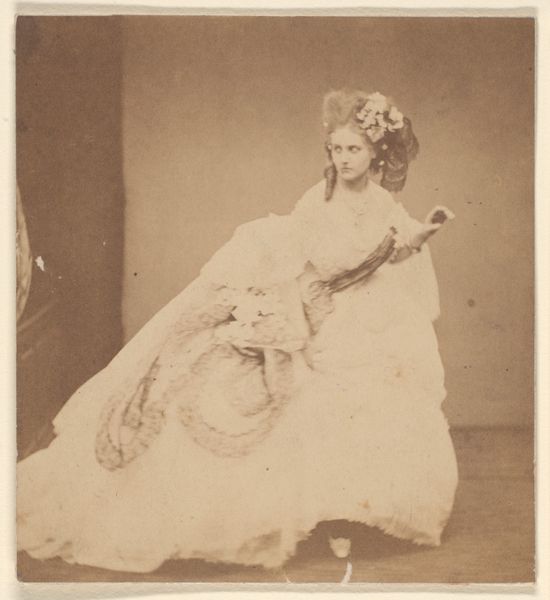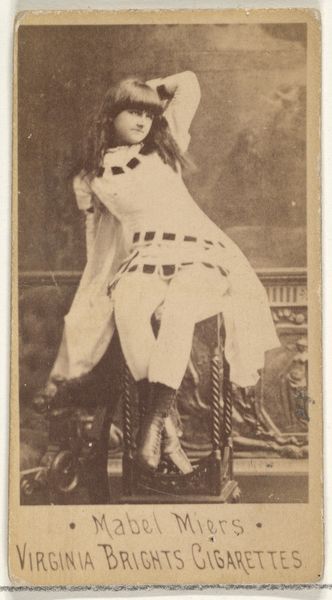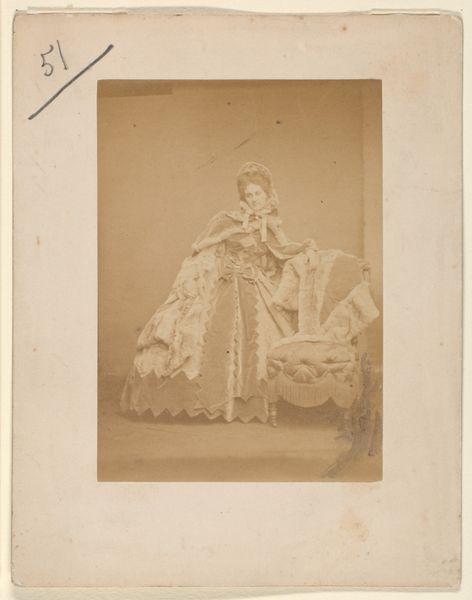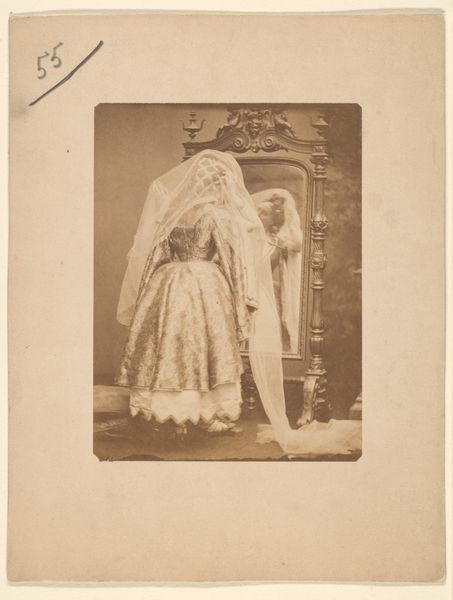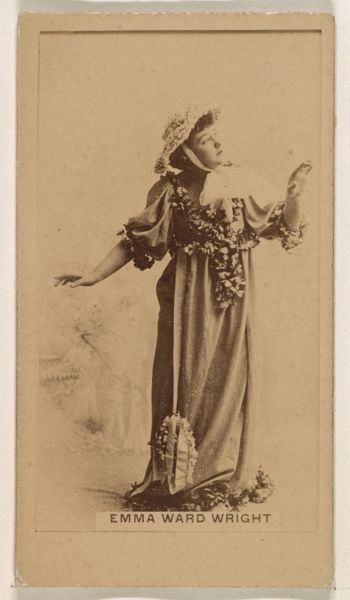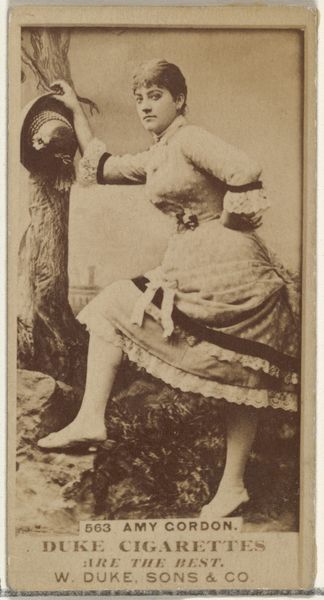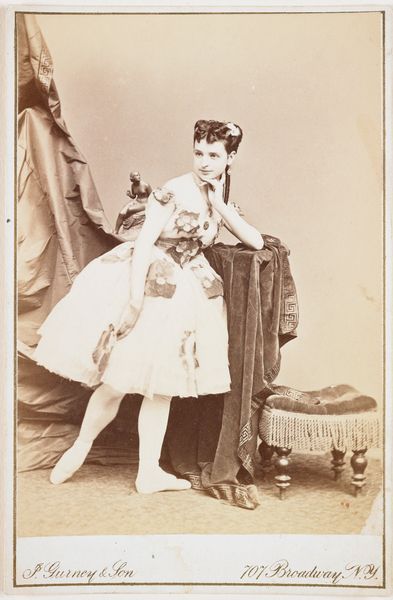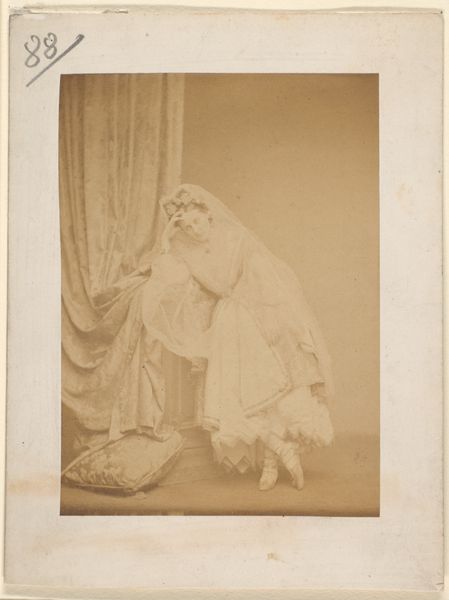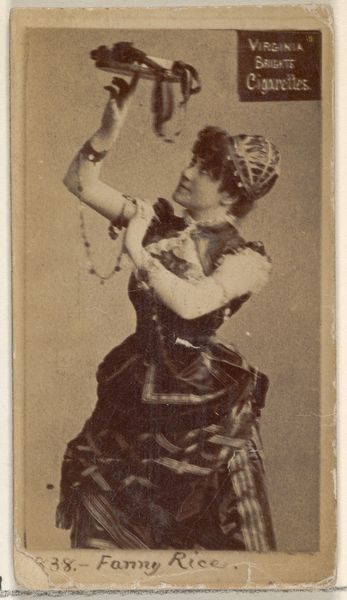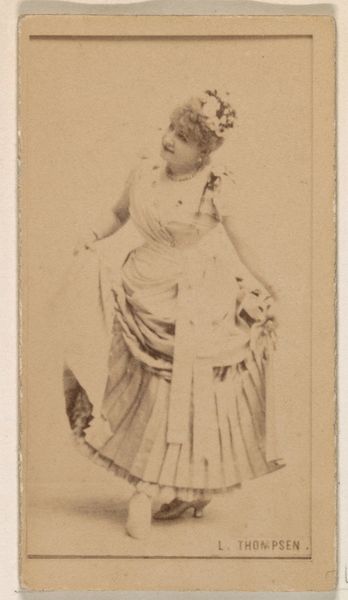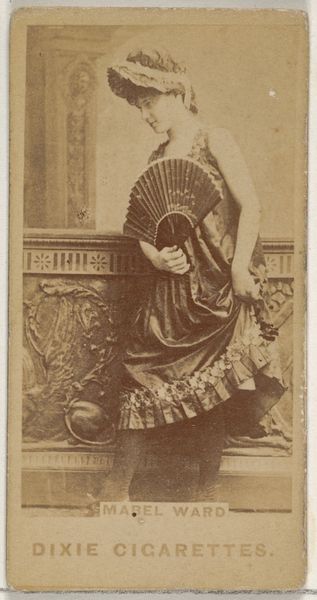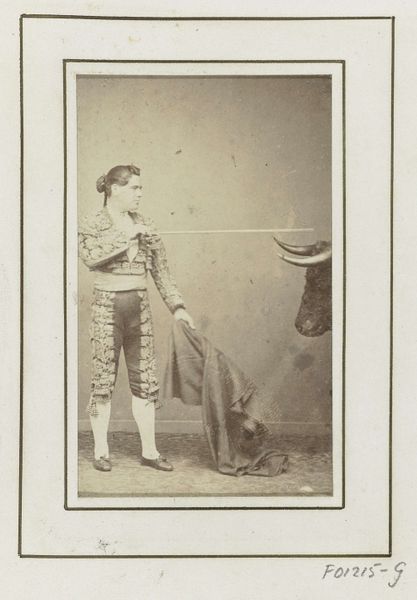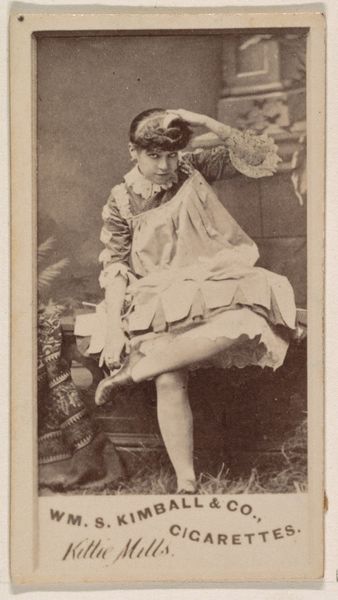
Dimensions: 8.3 x 10.2 cm. (3 1/4 x 4 in.)
Copyright: Public Domain
Editor: We're looking at "Le dos," taken in the 1860s by Pierre-Louis Pierson. It's a photograph, and the subject is a young girl seen from the back, dressed in what looks like Scottish attire. There's something unsettling about not seeing her face...what strikes you about this photograph? Curator: It's fascinating, isn’t it? On the surface, we have this romantic vision, a child in costume, reminiscent of highland lore. But if we delve deeper, we can consider the power dynamics at play. Who is allowed to perform identities, and what historical narratives are being co-opted? The "romantic" vision often masked colonial and class oppressions. Do you see echoes of this? Editor: That's a compelling angle! I was so focused on the visual—the light, the texture of the fabrics—I hadn't thought about it in terms of identity and power. The child is clearly from a privileged background, given the elaborate costume and studio setting, which further complicates things. Curator: Exactly. And notice how she is presented to us, not as an individual, but as a type, "Le dos", the back. We are positioned as viewers, perhaps voyeurs, consuming an image carefully constructed for a particular audience. What statement is being made by hiding her face, by showcasing the trappings of a culture mediated through a lens of wealth and privilege? Editor: So it’s less about the girl herself and more about what she represents within the framework of the era? The romantic ideal versus the colonial reality... I hadn't considered photography as a form of cultural critique, but this has definitely changed my perspective. Curator: Precisely! And that’s the beauty of art – it challenges us to question, to re-evaluate, and to consider the many layers of meaning embedded within.
Comments
No comments
Be the first to comment and join the conversation on the ultimate creative platform.
